

 Greetings from the Mister Freedom® Logistics Department. 
 One of the many faces of the Mister Freedom® Ranger Shirt. NEW BATCH of Mister Freedom® Ranger Shirt, Powerloom edition!
NOS authentic vintage Indian Madras
Made in USA
This is the final installment of our MF® Ranger Shirt project, a Mister Freedom® in-store and online exclusive.
They have by now taken over the streets of Los Angeles.
Made in USA from authentic vintage Indian Madras selvedge textiles, milled on powerloom. Read all about them here, indulge there.
This limited edition Ranger Shirt is designed in California by Mister Freedom®, and manufactured in the USA with New Old Stock Madras fabric originally milled in Madras, India.
Available WASHED/MACHINE DRIED.
SIZES:
14½ (Small)
15½ (Medium)
16½ (Large)
17½ (X-Large)
RETAIL $229.95
Available from www.misterfreedom.com, our Los Angeles brick & mortar store, and fine retailers around the World.
Email [email protected] or call 323-653-2014 with any questions unanswered above.
Thank you for your support,
Christophe Loiron
Mister Freedom® 2016








 “Do the Hustle, Do the Ska, Do the Continental!” Mister Freedom® Continental Sportcoat, Vest and Trousers
NOS Cacao Chambray, NOS Indigo Cross Hatch Twill
mfsc Sportsman Fall 2016
Made in USA
Immediately following the release of the limited edition Continental “Player” three-piece leisure suit, here is more Continental goodness from our Made in USA Mister Freedom® Sportsman catalog this Fall 2016.
To show the Continental’s versatility, and for elegant mix ‘n match options, we took the Continental from doing the Hustle in Las Vegas to doing the Ska in Kingston. Our original suiting patterns get a late 50’s – early 60’s textile treatment this time. The result is old school yet timeless, you get the flavor.
Style tip: To amuse the children, compliment the Continental with a hat that’s too small and a walking stick. Endless laughter and tears of joy guaranteed.
 The Mister Freedom® Continental is versatile. Back to the dancehall.
To enhance your ability to shake-a-tush rock steady-style, we are bringing on two handsome fabrics recently dug out. These vintage New Old Stock textiles are another lucky score, courtesy of our MF® team of relentless savvy treasure hunters.
So, besides the snazzy “Player” denim, the new fabric options for our Fall 2016 Continental triad are:
A) Cacao Chambray (brown warp & white weft), 100% cotton plain weave fabric, about 9 Oz., milled in Italy.
Only the Continental Trousers and Vest are released in Cacao Chambray.
B) Indigo Cross Hatch Twill (dark indigo warp and black melange weft), 100% cotton twill, about 11 Oz., milled in EU.
Only the Continental Sportcoat is released in Indigo Cross Hatch Twill.
The Continental Sportcoat, Vest and Trousers are designed in California by Mister Freedom® and manufactured in California, USA, by Mister Freedom® in collaboration with Sugar Cane Co.
SPECS:
PATTERNS:
Original sportcoat, vest and trousers Mister Freedom® mfsc patterns, in an original MF® classic blend of 1950’s, 60’s and 70’s vibes and silhouettes, mixing European and American styles.
FABRICS:
A) Cacao Chambray (brown warp & white weft), 100% cotton plain weave fabric, about 9 Oz., milled in Italy.
Lining: NOS fancy woven stripe 100% cotton twill (ivory white with brown stripes), milled in Europe.
B) Indigo Cross Hatch Twill (dark indigo warp and black melange weft), 100% cotton twill, about 11 Oz., milled in EU.
Lining: NOS fancy woven stripe 100% cotton plain weave (ivory white with blue & grey stripes), milled in Europe.
“INDIGO CROSS HATCH TWILL” Continental SPORTCOAT:
* Unstructured silhouette.
* Lightweight and soft, perfect traveling companion.
* High button front.
* Navy blue corrozo wood butons.
* Half shoulder floating lining, 100% cotton NOS fancy woven stripe twill.
* Side hip pockets with flaps.
* Pocket openings reinforced on the inside.
* Tonal 100% cotton stitching, clean caballo flat-felled seam construction, green color “Sportsman” signature chainstitch on the inside. No open edges or overlock.
* Made in USA.
“CACAO CHAMBRAY” Continental VEST:
* Six-button front.
* Two slanted box-pleat patch pockets with buttoned flaps.
* Full matching back with cinch strap, European-style metal buckle.
* Dark amber color corozo wood buttons.
* Full lining, 100% cotton NOS fancy woven stripe twill, no open seams.
* Tonal 100% cotton stitching.
* Made in USA.
“CACAO CHAMBRAY” Continental TROUSERS:
* Elegant late 1950′s early 1960’s type silhouette and fit, straight leg.
* Dark amber color corozo wood fly and waist buttons.
* Flat-felled side seam “caballo” all around construction.
* Rear welt pockets.
* Trousers-style belt loops.
* Crotch gusset pattern.
* Adjustable back cinch strap, with vintage NOS metal slide buckles.
* 100% cotton NOS fancy woven stripe twill pocket bags, waist band and fly facing.
* Watch pocket.
* Tonal stitching, 100% cotton thread construction, with inside green chainstich MF® signature.
* Original “The SPORTSMAN” woven rayon label on rear waistband, concealed when wearing a belt.
* ‘Open’ overlocked leg bottom, to suit your cuffing preferences.
* Made in USA.
SIZING/FIT:
This explains how we size our garments.
The Continental Sportcoat, Vest and trousers come raw/unwashed. We recommend the usual initial 30mn cold soak/occasional hand agitation/spin dry/hang dry process. The tagged size reflects the size of the garment after going through this process. The subtle variation of shrinkage between body fabric/lining fabric/cotton thread will result in puckering and roping, slightly altering the fit and drape.
I personally opted for a Size 38 in the Continental sportcoat and vest, and Waist 32 trousers. These are my usual sizes in mfsc garments.
Trousers sizing: The Continental Trousers are true to size. If you are a measured-waist 32 inches, you are a stamped W32 in the Continental Trouser. Do not size down on these. Please note that the Continental Trousers pattern might not be a good option for all body types. Proportion-wise, those with very muscular legs will probably look better in our regular Sportsman Chino models.
Trousers hemming: After the initial soak/hang dry process, we recommend settling down on the final length of the bottom hem after gently wearing the trousers around the house a bit. The cotton fabric tends to naturally bunch/wrinkle and pull the leg up slightly. Letting this specific fabric react to your own body for an hour or so will allow you to decide on a proper classic leg break that works for you.
Please refer to sizing chart for approximate raw/soaked measurements. Soaked = 30mn cold soak, spin dry and line dry.
Full wash cycle and heat dryer are not recommended.
CHART
CARE:
Hand wash or machine wash unbuttoned on delicate, cold water with minimal environmentally friendly detergent. Line dry.
NOTE: Full washing cycle and machine dry might result in excessive shrinkage, color fading, marbling or damage, to be experimented with care and at owner’s risk.
NOTE on the INDIGO sportcoat: hand wash separately as indigo croaking is expected. Indigo color may rub on light color garments.
Each piece of the Continental suiting series is sold individually and available RAW/unwashed
“INDIGO CROSS HATCH TWILL” Continental SPORTCOAT
Retail $329.95
SIZES:
Small (36)
Medium (38)
Large (40)
X-Large (42)
XX-Large (44)
“CACAO CHAMBRAY” Continental VEST
Retail $249.95
SIZES:
Small (36)
Medium (38)
Large (40)
X-Large (42)
XX-Large (44)
“CACAO CHAMBRAY” Continental TROUSERS
Retail $289.95
Sizes (W stands for Waist… Leg length about 36’’, left un-cuffed)
W 28
W 30
W 32
W 34
W 36
W 38
Soon available from www.misterfreedom.com, our Los Angeles brick & mortar store, and fine retailers around the World.
Email [email protected] or call 323-653-2014 with any questions unanswered above.
Thank you for your support,
Christophe Loiron
Mister Freedom® 2016








The Continental three-piece leisure suit “Player”, limited edition.
NOS Cotton-Linen crosshatch denim twill, indigo moss blue-green
Sportsman Collection Fall 2016
For Fall 2016, we have secured a fancy batch of New Old Stock denim for a special “Player” limited edition of our Continental sportcoat/vest/trousers combo. These MF® original Continental patterns, added to the Mister Freedom® Sportsman ongoing catalog of classic silhouettes and styles around 2015, have been popular with the discerning Man of the World looking for an elegant alternative to the Alcatraz convict workwear look.
This “Player” denim twill is similar to that of the Spring 2016 Continental trousers, but a bit lighter in color. The ‘Player’ is a 10.5 Oz. crosshatch denim twill, light indigo moss blue-green color, a slubby weave of cotton-linen blend (linen or similar natural vegetal fiber), with a 1960’s ‘sharkskin’-type sheen, fabric milled in Europe.
We have added an irresistible 60’s-70’s ‘leisure suit’ touch to our Continental “Player”, by enhancing the style with orange contrast stitching. Yumm. The lining we opted for is also a New Old Stock find, a fancy woven stripe 100% cotton twill, also of European origin.
The ‘Player” Continental sportcoat, vest and trousers are offered separately, but are available as a specially-priced “Huggy Bear” set, for the stylish high-rolling good fella keen on the Las Vegas hustler look.
The Continental three-piece leisure suit Player Edition is designed in California by Mister Freedom® and manufactured in California, USA, by Mister Freedom® in collaboration with Sugar Cane Co.
SPECS:
PATTERNS:
Original sportcoat, vest and trousers Mister Freedom® mfsc patterns, in an original MF® classic blend of 1950’s, 60’s and 70’s vibes and silhouettes, mixing European and American styles.
FABRIC:
NOS 10.5 Oz. crosshatch denim twill, light indigo moss blue-green color, slubby weave of cotton-linen blend (linen or similar natural vegetal fiber), with a 1960’s ‘sharkskin’-type sheen, milled in Europe.
Lining: NOS fancy woven stripe 100% cotton twill, milled in Europe.
DETAILS:
“PLAYER” Continental SPORTCOAT:
* Unstructured silhouette.
* Lightweight and soft, perfect traveling companion.
* High button front.
* Amber color corrozo wood butons.
* Half shoulder floating lining, 100% cotton NOS fancy woven stripe twill.
* Side hip pockets with flaps.
* Pocket openings reinforced on the inside.
* Contrast orange 100% cotton stitching, clean caballo flat-felled seam construction, green color “Sportsman” signature chainstitch on the inside. No open edges or overlock.
* Made in USA.
“PLAYER” Continental VEST:
* Six-button front.
* Two slanted box-pleat patch pockets with buttoned flaps.
* Full matching back with cinch strap, European-style metal buckle.
* Amber color corozo wood buttons.
* Contrast orange 100% cotton thread construction, with inside green chainstich MF® signature.
* Full lining, 100% cotton NOS fancy woven stripe twill, no open seams.
* Made in USA.
“PLAYER” Continental TROUSERS:
* Elegant late 1950′s early 1960’s type silhouette and fit, straight leg.
* Amber color corozo wood fly and waist buttons.
* Flat-felled side seam “caballo” all around construction.
* Rear welt pockets.
* Trousers-style belt loops.
* Crotch gusset pattern.
* Adjustable back cinch strap, with vintage NOS metal slide buckles.
* 100% cotton NOS fancy woven stripe twill pocket bags, waist band and fly facing.
* Watch pocket.
* Contrast orange 100% cotton thread construction, with inside green chainstich MF® signature.
* Original “The SPORTSMAN” woven rayon label on rear waistband, concealed when wearing a belt.
* ‘Open’ overlocked leg bottom, to suit your cuffing preferences.
* Made in USA.
SIZING/FIT:
This explains how we size our garments.
Each part of the Continental three-piece leisure suit comes raw/unwashed. We recommend the usual initial 30mn cold soak/occasional hand agitation/spin dry/hang dry process. The tagged size reflects the size of the garment after going through this process.
Please note that it is the nature of cotton-vegetable fiber blend textiles to wrinkle and slightly stretch back and forth with each laundry/wear cycle. For example, freshly laundered linen garments fit tighter in the morning than at the end of the day. If you prefer a clean, pressed look following the initial soaking process, the Continental Vest can be steamed or professionally pressed.
I personally opted for a Size 38 in the Continental sportcoat and vest, and Waist 32 trousers. These are my usual sizes in mfsc garments.
Trousers sizing: The Continental Trousers are true to size. If you are a measured-waist 32 inches, you are a stamped W32 in the Continental Trouser. Do not size down on these. Please note that the Continental Trousers pattern might not be a good option for all body types. Proportion-wise, those with very muscular legs will probably look better in our regular Sportsman Chino models.
Trousers hemming: After the initial soak/hang dry process, we recommend settling down on the final length of the bottom hem after gently wearing the trousers around the house a bit. The crispy cotton-linen fabric tends to naturally bunch/wrinkle and pull the leg up slightly. Letting this specific fabric react to your own body for an hour or so will allow you to decide on a proper classic leg break that works for you.
Please refer to sizing chart for approximate raw/soaked measurements. Soaked = 30mn cold soak, spin dry and line dry. The “Player” denim fabric and the stripe cotton lining are pretty much sanforized, but puckering and roping resulting from the rinsing process will slightly alter the fit and drape. Further shrinkage and creasing might be achieved with full wash cycle (on delicate) and a heat dryer cycle, not recommended.
CARE:
Hand wash or machine wash unbuttoned on delicate, cold water with minimal environmentally friendly detergent. Line dry.
NOTE: Full washing cycle and machine dry might result in excessive shrinkage or damage, to be experimented with care and at owner’s risk.
Each piece of the Continental “Player” three-piece leisure suit is available RAW/unwashed
“PLAYER” Continental SPORTCOAT
Retail $329.95
SIZES:
Small (36)
Medium (38)
Large (40)
X-Large (42)
XX-Large (44)
“PLAYER” Continental VEST
Retail $249.95
SIZES:
Small (36)
Medium (38)
Large (40)
X-Large (42)
XX-Large (44)
“PLAYER” Continental TROUSERS
Retail $289.95
Sizes (W stands for Waist… Leg length about 36’’, left un-cuffed)
W 28
W 30
W 32
W 34
W 36
W 38
Huggy Bear Special !!!
“PLAYER” Continental Three-Piece Leisure Suit SET: $770.00 (all three pieces must be purchased as one set at the same time).
 Dig? Soon available from www.misterfreedom.com, our Los Angeles brick & mortar store, and fine retailers around the World.
Email [email protected] or call 323-653-2014 with any questions unanswered above.
Thank you for your support,
Christophe Loiron
Mister Freedom® 2016
 1) Go to www.misterfreedom.com
 2) Select your mfsc Collection of choice…
 3) Select your item of choice…
 4) You got a winner! Select a size and ADD to CART…
 5) The 30% discount is applied. Check out or continue shopping…
 The convincing power of machetes, cutlasses, and crowbars… MUTINY on the Ol’ Pile ‘o Rags
Special 30% OFF Sale !!!
To celebrate 10 years of Mister Freedom® x Sugar Cane (msfc) fruitful collaborations, mutineers aboard the “Ol’ Pile o’ Rags” have subtlety convinced the captain to unload part of the ship’s precious cargo at 30% of its value! We need room for bananas.
Pirates are invited to visit the vessel mooring at 7161 Beverly Blvd for their share of the loot, while supplies last. Visitors can also try themselves at a cat-o-nine-tails session on the skipper, while the rope holds.
The 30% sale applies to our webstore as well, as outlined in the above tutorial.
Q: “Which items are 30% OFF?”
MF: If an item has a red 30% OFF next to the *Add To Cart button*, it qualifies. The discount will be applied during PayPal checkout.
Q: “Is there a SALE section on the website?”
MF: Negative, check per collection and per item.
Q: “Are Sportsman items on sale?”
MF: The sale does not apply to items from our ongoing Sportsman catalog or SS2016 Skipper collection.
Q: “What’s with the bananas!?”
MF: ?
Q: “Yes but did you get the Pokémon?”
MF: ?
Thank you all for your support during the past ten or so years!
Email the Mutiny Department at [email protected] with any concern you might have, before we reach Pitcairn.
☠️?
The MF® Team,
July 2016






 MF® Liberty Crackerjack (01 of 66)  MF® Liberty Crackerjack (05 of 66)  MF® Liberty Crackerjack (10 of 66)  MF® Liberty Crackerjack (14 of 66)  MF® Liberty Crackerjack (15 of 66)  MF® Liberty Crackerjack (18 of 66)  MF® Liberty Crackerjack (21 of 66)  MF® Liberty Crackerjack (29 of 66)
 MF® Liberty Crackerjack (34 of 66) 
-

-
02 of 66
-

-
03 of 66
-

-
04 of 66
-

-
06 of 66
-

-
07 of 66
-

-
08 of 66
-

-
09 of 66
-
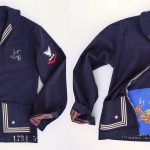
-
11 of 66
-

-
12 of 66
-

-
13 of 66
-
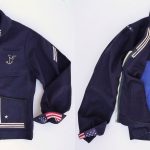
-
14 of 66
-

-
16 of 66
-

-
17 of 66
-

-
19 of 66
-

-
20 of 66
-

-
22 of 66
-

-
23 of 66
-

-
24 of 66
-

-
25 of 66
-

-
26 of 66
-

-
27 of 66
-

-
28 of 66
-

-
30 of 66 (not available)
-

-
31 of 66
-

-
32 of 66
-

-
33 of 66
-

-
35 of 66
-

-
36 of 66
-

-
37 of 66
-
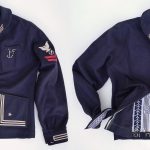
-
38 of 66
-

-
39 of 66
-
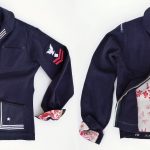
-
40 of 66
-

-
41 of 66 (not available)
-

-
42 of 66 (not available)
-

-
43 of 66
-

-
44 of 66
-

-
45 of 66
-

-
46 of 66
-

-
47 of 66
-

-
48 of 66
-

-
49 of 66
-

-
50 of 66
-

-
51 of 66
-
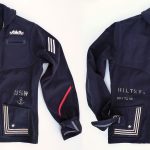
-
52 of 66
-

-
53 of 66
-

-
54 of 66
-

-
55 of 66
-

-
56 of 66
Mister Freedom® customized vintage Liberty Crackerjack.
2016 Limited Edition of 66 one-of-a-kind pieces.
Up-cycled in USA.
Involved with used and vintage clothing as a rag dealer for the past 25 years, I guess I have recycled my share of clothes. If early on I found the trade to be a pretty honest and independent way of making a living, only more recently have I come to realize that keeping textiles out of landfills is also a pretty worthy mission, especially in a world of fast and disposable fashion.
Purchasing previously-owned clothing from your local recycled shops, antique flea markets or vintage boutiques is definitely less of a waste of resources than an impulse buy at, say, H&M or Forever 21, a purchase probably bound to trash bins within a few months, where some 10 million tons of textiles are dumped every year in America.
During my days working at American Rag Cie in the early 1990’s, I was handed the ‘Remake Department’ hot potato for a few seasons. A remake was basically an unsalable used item you could find tons of in the rags, transformed into a desirable and hip garment. Stadium jackets cropped into sexy boleros (it was the 90’s…), sweatshirt hoods attached to flannel shirts, patched-up 501® hot pants, re-sized Arnold Palmer golf cardigans, etc… Imagination was the limit, not questionable taste. We participated in fancy international trade shows with these ‘collections’, orders from fashion boutiques flowed in. Remakes were big for a while.
Military surplus is always a good source for such projects. Due to our propensity, as Homo Sapiens Sapiens, for territoriality and self-righteousness, and following an ever-fluctuating geopolitical equilibrium, it is inevitable that obsolete military surplus piles up. And for everything from ingenious recycled coolness to fashion Frankensteins, just give Homo Sapiens Sapiens a threaded needle and scissors. We’ll try to forget the few history-filled collectibles forced and tortured into awkward new beginnings that occasionally pop up on the racks of recycled clothing boutiques, such as 1950’s US Navy white bellbottoms tie-dyed deadhead-style in more colors than a Guatemalan rug, M-65 field jackets silkscreened with bright pink plastisol skulls, 60’s Vietnam ERDL jungle fatigue shirts adorned with assorted rhinestones and brass studs, or faux leopard, etc… Collateral damage.
Figuring out what to do with specific decommissioned military uniforms before moths or roof leaks get to them gets challenging at times. For the ragman, wool pull-over sailor tops are one of those recycling puzzling challenge.
Due to an inclination for things naval at Mister Freedom®, we have decided to tackle these buggers and go green on some blues. So our latest up-cycling venture is the vintage MF® Liberty Crackerjack, Uncle Sam-made gear turned wearable for the stylish city dweller.
This has been another one of those manufacturing journeys for us…
Hunting down salvageable specimen around flea markets and raghouses, we managed to collect sixty-six vintage US Navy blue dress jumpers. This limited selection is a mixture of vintage WW2 and Cold War period enlisted dress blues, aka crackerjacks.
Each wool pullover shirt underwent a lengthy make-over and re-tailoring process, each piece receiving a one-of artistic treatment. Our stylistic approach was that of period Asiatic Fleet custom tailor-made garments familiar to militaria collectors. The vibe of our MF® Liberty Crackerjack is inspired by Liberty cuff type sailor uniforms, military “party” suits and other ‘local-made’ souvenir garments favored by the enlisted man on tour, fighting for Freedom on exotic shores.
In the US Navy, liberty cuffs and fancy lining embroideries were tolerated on board. They were intended to be concealed, and usually only flashed to impress buddies and bar ladies. At 7161 Beverly, as bound to Bluejackets’ regulations as Calico Jack‘s band of pyrates were, we took the old salty naval tradition of customizing one’s uniform up a few notches. We respectfully altered the whole garment, in and out, definitely ‘demilitarizing’ it.
Actually, similar practice was not uncommon for US Navy personnel, for instance during a tour of duty in China in the late 40’s. The works of skilled local naval base tailors, specimen of wool jackets or shirts cut from government-issued navy blue wool uniforms have today become sought-after collectibles. The reader might be familiar with the multi-colored embroidered dragons, “Shanghai 1945” and other Asian theater motifs adorning such custom-made vintage souvenir garments.
-

-
Our 1900’s Willcox & Gibbs chainstitch machine, used to customize the MF® Liberty Crackerjack.
-

-
Original 1940’s-50’s local-made garments and vintage woven tape.
-

-
Look like an old sea dog without ever boarding a ship.
Although not replicas of authentic military personnel period souvenirs, our limited edition MF® Liberty Crackerjacks have a Sand Pebbles meets Sayonara vibe, relating to the presence of US Armed Forces in Asia throughout History, from Shanghai to Tokyo to Saigon to Okinawa…
Turning a plain crackerjack shirt into a Liberty jacket (we had to brace ourselves not to call it Liberty Crackerjacket) allowed us to put to some good use a limited stash of vintage parts from our archives we had been saving for some time. Each jacket features a rare original 1930’s~40’s NOS zipper of French manufacture. Stamped “LFE”, these hard-to-find zippers were scored from a Paris flea market years ago, and probably originate from the original French fastener company Éclair Prym that started producing “La Fermeture Éclair®”, the French household name for zipper, in 1924.
The ‘tar flap’ was re-cut into a round collar, leaving enough left over flap fabric to make two patch pockets, each featuring the traditional Navy white stripes and stars. We’re quite proud of that MF® à la Coco Chanel touch, a little re-purpose spark of innovation we’ll take the credit for, as I have honestly not seen it done on vintage pieces before. So, think of us when you see that at the Rosebowl flea market next time…
The patient type can also visually dull-out the rows of white tape by dyeing them with a small brush dipped in fabric dye or fabric paint. The Liberty Crackerjack 42 of 66 (that I am keeping for personal use) shows stripes hand-dyed in blue.
Aside from the general restructuring, each crackerjack was customized with a mixture of vintage parts. Each of the sixty-six MF® Liberty Crackerjack we made is unique and numbered (in a non-chronological sequence). Each features a combo of New Old Stock woven tape for cuffs, vintage embroidered silk textiles from China, antique kimonos or indigo discharge printed cotton from Japan, hand-cut stencil painted markings… We even used an antique 1900’s Wilcox & Gibbs sewing machine to add custom rainbow stitching accents and patches.
The original ranks and insignia patches of each vintage jumper were left untouched. The original Navy cloth label previously covered by the tar flap, if still attached to the garment, now appears on the back of the jacket.
The sizing of the batch is all over the place, but tends to pull towards small/medium, not an uncommon size for fit and skinny 18 or-so year-old enlisted sailors of the times. Smaller sizes actually look pretty cool on ladies into mixing up a bit of vintage fashion in their outfits.
The MF® Liberty Crackerjack is re-designed and up-cycled or whateveryacallit in California by Mister Freedom® in a limited edition of sixty-six one-of-a-kind pieces. Each piece is unique and might contain imperfections, fading, repairs or permanent stains due to its vintage origin.
Please note that not all of the above pictured Liberty Crackerjacks are available for sale.
FABRIC:
Vintage US Navy mil-specs melton wool. A few pieces are period private purchase wool gabardine.
SPECS:
* An original Mister Freedom® up-cycled design.
* Made from vintage Government-issued enlisted sailors navy blue wool jumpers, Cold War era.
* Tar flap turned into round collar.
* Zip-front closure, featuring a 1930’s-40’s NOS French metal “LFE” zipper.
* Two recycled front patch pockets, one original slash chest pocket, one original inside chest flap pocket.
* Each jumper features a “Liberty cuffs” type customization, inspired by Asiatic Fleet custom naval tailor garments of the 20th Century: assorted vintage parts, NOS ornaments and bias tape, antique fabric decorative panels and/or multi colored chainstitch accents and/or liberty cuff patches…
* Painted markings from hand-cut stencils.
* Up-cycled in California, USA.
SIZING:
Assorted sizing, fits and silhouettes.
Approximate measurements of each MF® Liberty Crackerjacks are available upon request from [email protected]
CARE:
Each Liberty Crackerjack has been professionally dry-cleaned in an eco-friendly facility.
Dry clean only.
Please note that due to the age of the vintage New Old Stock zippers, they should be operated with care. As with vintage 1930’s cotton tape metal zippers, move gently and do not pull hard or yank if you feel resistance. Candle wax can be applied periodically to the zipper teeth for maintenance.
RETAIL:
$ 329.95 (unless otherwise individually priced.)
Available from Mister Freedom® HQ, our brick & mortar store at 7161 beverly Blvd., Los Angeles, CA 90036.
Email [email protected] or call 323-653-2014 with any questions unanswered above.
Thank you for your support,
✌?
Christophe Loiron
Mister Freedom® 2016
|

































































































































































